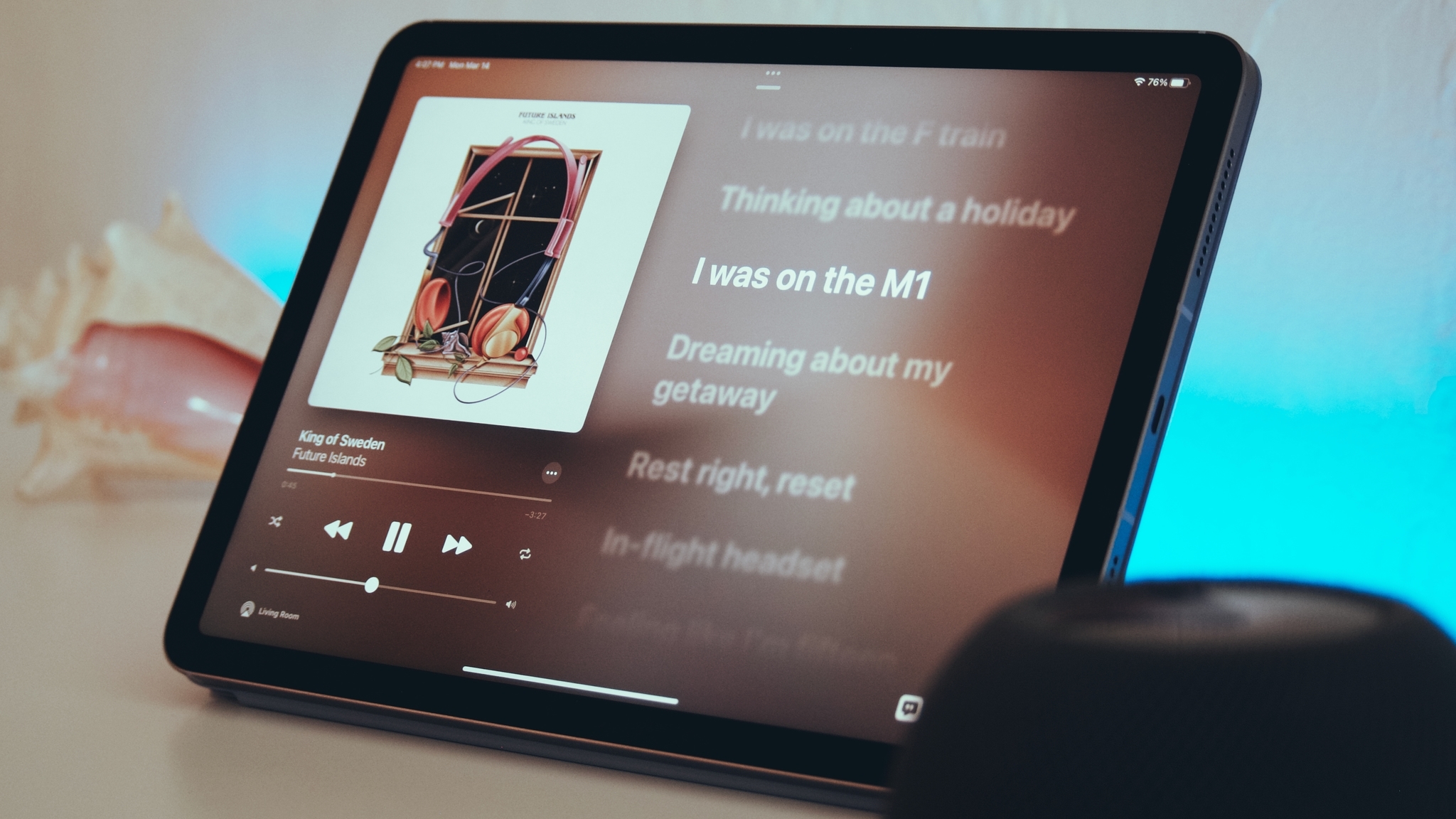iMore Verdict
Bottom line: Apple's newest entry into the iPad lineup, the refreshed iPad Air 5, packs a serious punch. With 5G compatibility, a much improved front-facing camera, and an M1 processor powering it all, it's an impressive tablet for a fantastic price.
Pros
- +
M1 chip
- +
Improve front-facing camera with Center Stage
- +
Supports 5G
- +
Five color options
Cons
- -
Only one rear camera
- -
Only up to 256GB of storage
You can always trust iMore.
Apple's iPad lineup is more confusing than ever, but the iPad Air 5 still stands on its own as a stellar tablet for anyone looking for power and performance without a "pro" price tag.
As expected, the iPad Air 5 isn't quite as groundbreaking as its predecessor, it does feature the same design and overall look as the previous model, but the big change on the inside is what intrigued me. Instead of the iPad Air 5 getting the latest A-series chip as its brain, Apple decided to throw in the almighty M1 chip. The same chip that powers a lot of its Mac lineup, and of course, the more expensive iPad Pro, now powers the best iPad for most people.
iPad Air 5: Price and availability
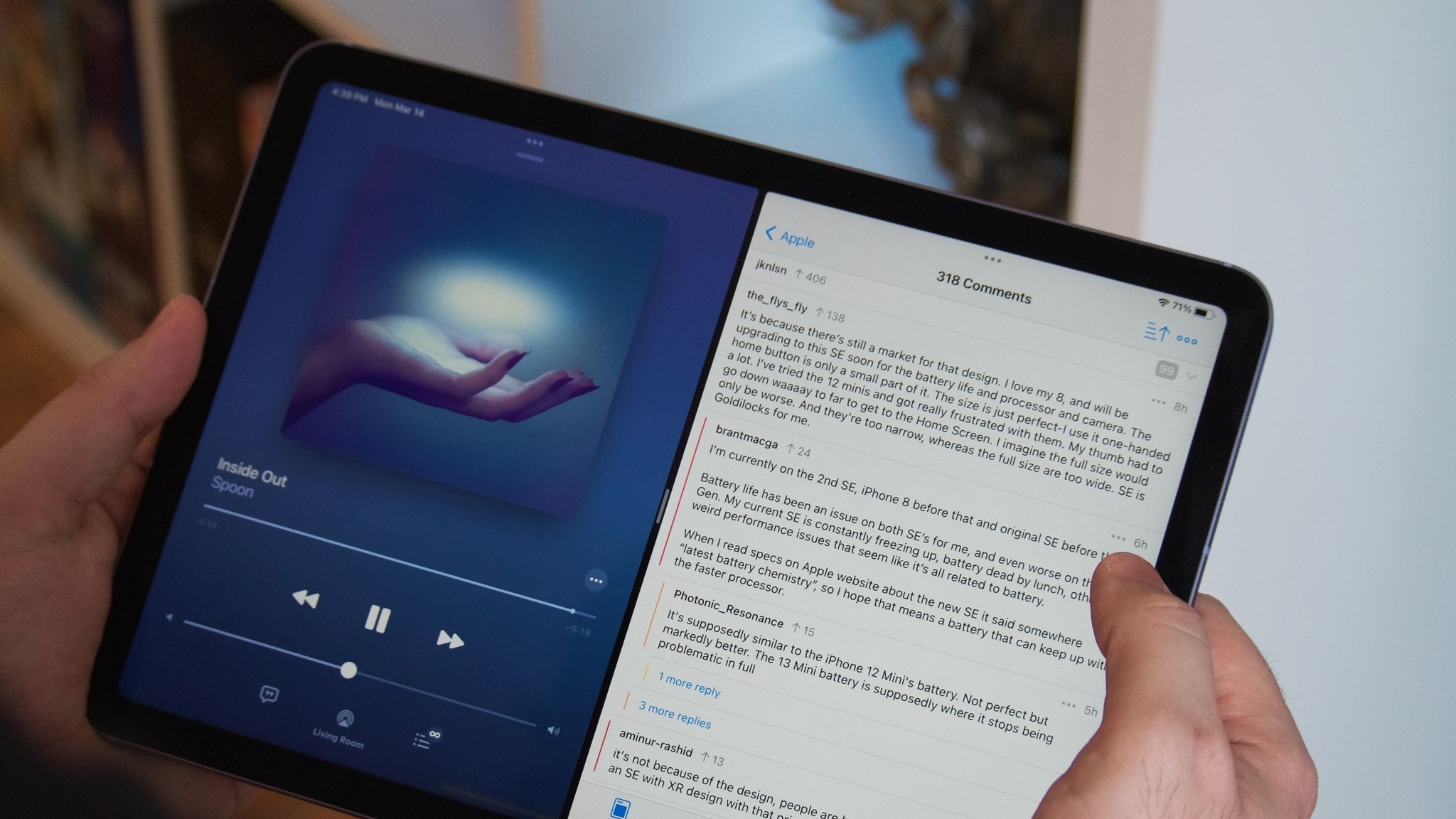
The iPad Air 5 is available to purchase through Apple directly and other popular retailers such as Amazon, Best Buy, B&H Photo, etc. It starts at the same price as the last generation, $599, but that will only get you the Wi-Fi-only version with 64GB of storage.
You can increase the storage to 256GB, but that's where the iPad Air 5 maxes out, and there is a Wi-Fi + Cellular version of the device that will also cost more money. Here's a quick breakdown of all the models and their prices:
| Storage | Connectivity | Price |
|---|---|---|
| 64GB | Wi-Fi only | $599 |
| 256GB | Wi-Fi only | $749 |
| 64 GB | Wi-Fi + Cellular | $749 |
| 258GB | Wi-Fi + Cellular | $899 |
The iPad Air 5 is available in five colors: space gray, starlight, pink, purple, and blue. And, with Black Friday coming up, we expect to see some great Black Friday iPad deals on the iPad Air 5 this year. So keep an eye out for those.
iPad Air 5: Hardware and design

The iPad Air 5 has a lot in common with the 4th-generation model; the design is the same. You'll find the same rounded corners on its 10.9-inch Liquid Retina Display, the USB-C port at the bottom, two-speaker audio, Smart connector for accessories is in the same spot, and the list goes on. Just by looking at the iPad Air 5 next to an iPad Air 4, you likely wouldn't be able to tell the difference.
While the design remains the same, and after the significant redesign last time, that's hardly a surprise; it still feels and looks modern. The iPad Air 5 doesn't leave you wondering if you've accidentally used a time machine to travel back in time the same way the iPad (2021) does, and the usability of the device from a physical standpoint is still top-notch. Although the new iPad Air is ever so slightly heavier than the previous model — .02 pounds to be precise — it's still that perfect blend between portability and size. It's light enough to carry around with ease without making your laptop bag or backpack feel heavy, but the nearly 11-inch display is big enough for work, gaming, watching movies, and more.
Same design as before, but that's not a bad thing
Touch ID is back in the Sleep/Wake button, and it's just as speedy as ever. Simply rest your finger on the button to open up your iPad Air whenever you need it. You can add multiple fingers, so it's easier to share the iPad with someone (if that's your style) or make sure you have the most comfortable finger to use for regardless of which position your iPad is in. The only time I wished Face ID was on my iPad Air 5 was when I had it connected to a keyboard because it was far easier to just type in my passcode/password than to reach over and use Touch ID. If it had Face ID, like the iPad Pro (2021), I could just plop down in front of the Air and get to typing just a tad quicker. Still, I love Touch ID, and the implementation on the iPad Air 5 is fast and reliable every single time.
The iPad Air 5 is still sporting a USB-C port instead of the lightning port still used by the iPhone or the base iPad. If you only care about using the port for charging your device, then the fact that it's USB-C won't change anything for you; however, USB-C brings a ton of options in terms of connectivity. It's super easy to use hard drives, USB-C hubs, and other accessories with the iPad Air 5 because you can just plug them in directly to your iPad and start using them. Heck, you can even use the brand new Studio Display or even the Pro Display XDR with the iPad Air 5 since it can support one 6K display. If you're not used to a USB-C port on your iPad, you'll be pleasantly surprised with how much more it can do and how many different workflows it can fit into. Of course, it isn't a Thunderbolt port like you get on the iPad Pro, so it tops out at 10Gbps data transfer speeds rather than the 40Gbps Thunderbolt gives you.
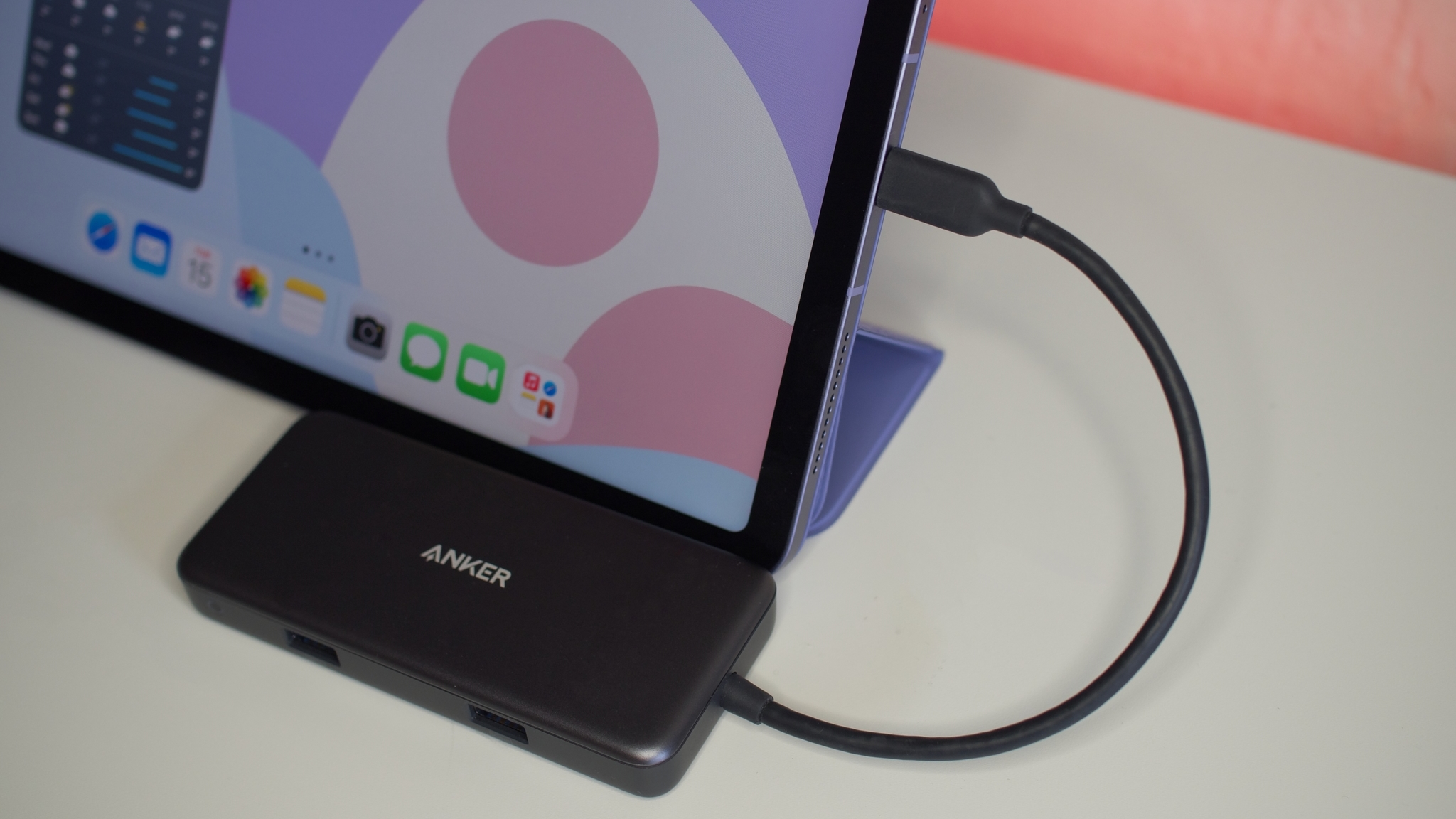
Speaking of displays, the screen on the iPad Air 5 hasn't changed; it's still the same panel that was in the last version. It's 10.9-inches in size and sports a 2360‑by‑1640 resolution at 264 PPI, meaning everything is very sharp and clear. Even without the variable refresh rate up to 120Hz that the ProMotion display in the iPad Pro has, I haven't had too many complaints about the display on the iPad Air 5. Yes, 120Hz does make scrolling smoother, and it's excellent for gaming, but for me, and likely many people, you're not going to miss ProMotion if you didn't have it before. If I had one real complaint about the iPad Air 5, the max brightness of 500 nits is a little low. So if you're using your iPad Air outside or in any really bright environment, you'll likely have a bit of trouble seeing the screen. It's not terrible by any means, but even a slight bump in the max brightness — like the 600 nits of the 11-inch iPad Pro — would likely help a lot. Still, the display on iPad Air 5 has many other good features that you would expect, like TrueTone and P3 wide color gamut. In addition, the screen is fully laminated and sports an anti-reflective coating, which helps a lot in everyday use.
The most significant change in the iPad Air 5 hardware is mainly on the inside since Apple decided it wants to put the M1 chip in everything it can, and the iPad Air is now the cheapest device you can buy from Apple with the M1 processor. I'll talk more about the M1 chip when I discuss performance a little later, but to give you a little taste, it's fast, it's powerful, it's an M1. I am happy to report that the M1 hasn't caused the Air 5 to get too hot or overheat in my testing. This was a concern I had due to the increase of power, but even after some pretty intense gaming sessions, the iPad Air 5 mostly keeps its cool. Of course, it will get warm; all processors generate heat, but it's nothing out of the ordinary, and I didn't notice any measurable performance throttling when my iPad Air 5 did get a little warm, which is excellent.
5G is limited to Sub-6 bands, but it's a nice bit of futureproofing
Last but certainly not least, the iPad Air 5 now supports 5G, but there's a bit of a catch. The new Air doesn't support mmWave 5G, which is the faster type of 5G that can get you those 1GB/s download speeds. It only supports Sub-6 5G, which, while slower than mmWave, is much more common and accessible to more people. 5G is still an emerging technology, and mmWave networks have been getting up a lot slower than Sub-6. The difference between Sub-6 and mmWave 5G can be a little nuanced at times, but remember, the previous iPad Air only supported 4G LTE. How much this matters to you will likely come down to personal preference and location. If you like getting Wi-Fi + Cellular iPads, and you happen to have a 5G in your area, you will likely be pretty excited that the iPad Air can now take advantage of that. For everyone else, it's just a bit of futureproofing that's nice to have in case 5G becomes an option for you somewhere down the line.
iPad Air 5: Software and performance
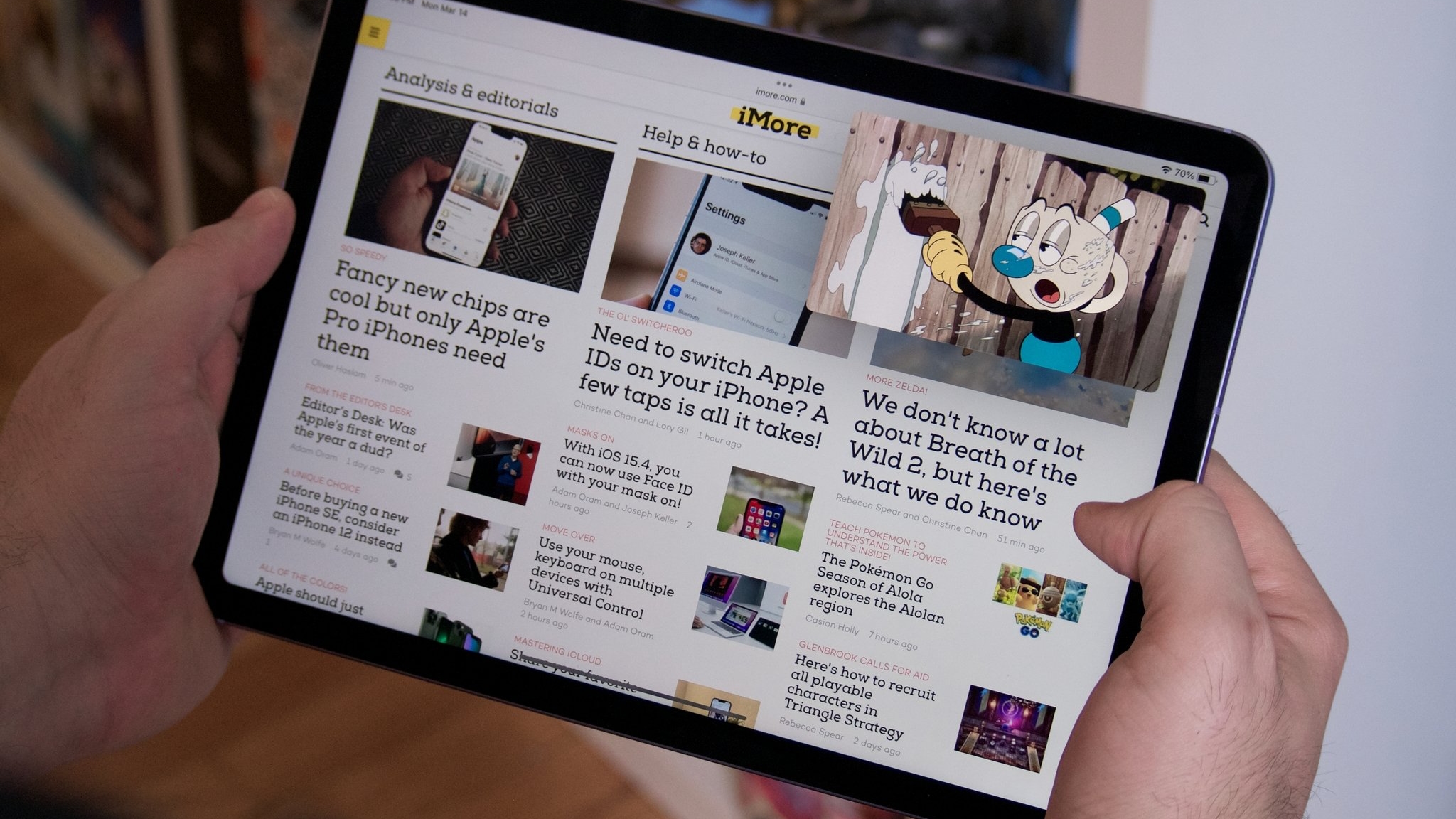
The iPad Air 5 runs the latest version of iPadOS 15, which brings a good dose of features while mainly focusing on improving foundational iPadOS features like the Home screen, Multitasking, and keyboard shortcuts.
iPadOS, in a way, is still relatively new as an operating system. Yes, it's based on iOS, but it's only been a few years since Apple started making the software on iPad a little more unique and tailored to the iPad experience, rather than just a giant version of iOS. It's a solid operating system, and the improvements to Multitasking in the latest version of the software were needed. However, for some people, it still won't provide that same laptop experience that some iPads fans have been craving. One thing is for sure. The M1 chip makes iPadOS 15 run so seamlessly that it will likely surprise you if you haven't experienced an M1 processor before.
My previous iPad was the base iPad from last year, and I love it, don't get me wrong, but the snappiness and speed of iPadOS on the iPad Air 5 are just so much better. It's simple to transfer data from your old iPad to the new one too.
The iPad (2021) is sporting an older chip than even the iPad Air 4, but it surprised me how much I noticed the difference. If you're upgrading from the previous Air model, the contrast will be less stark. But, there is something to be said that you can only put so much power into a chip before you experience dismissing returns, and I had thought we reached that pinnacle in the iPad already, but the M1 proved me wrong.
The M1 chip makes moving through iPadOS seamless
It doesn't seem to matter what you're doing on your iPad Air 5; the M1 chip handles it with such ease. It makes using all those iPad-specific features like Multitasking, split-screen, and Sidecar so much more intuitive in a way because the machine doesn't stutter at all when you're moving throughout iPadOS. Out of sight, out of mind. It's almost like a Jedi mind trick because you're doing all the same tasks you've done before, but it's just so much smoother that it feels better. There's no other way to explain it.
On top of the snappiness of iPadOS, the M1 chip also turns your iPad Air 5 into an extremely capable machine for just about any use.
It's quickly become my favorite Apple gaming machine because not only is the 10.9-inch screen such an excellent size for big games, it also runs everything so smoothly. You'll notice the difference in games that are GPU intensive. Big AAA studio games like Call of Duty mobile look stunning but play so buttery smooth that it really feels like you have a portable console at times. Pair it up with the right Apple-compatible gaming controller, and you may forget you're plying on an iPad. Of course, the iPad isn't as portable as an iPhone, so it's not like I'd pull it out on a bus ride to play games, but if you're sitting down in a coffee shop, it's likely the best device you have to bust out for a quick gaming session.
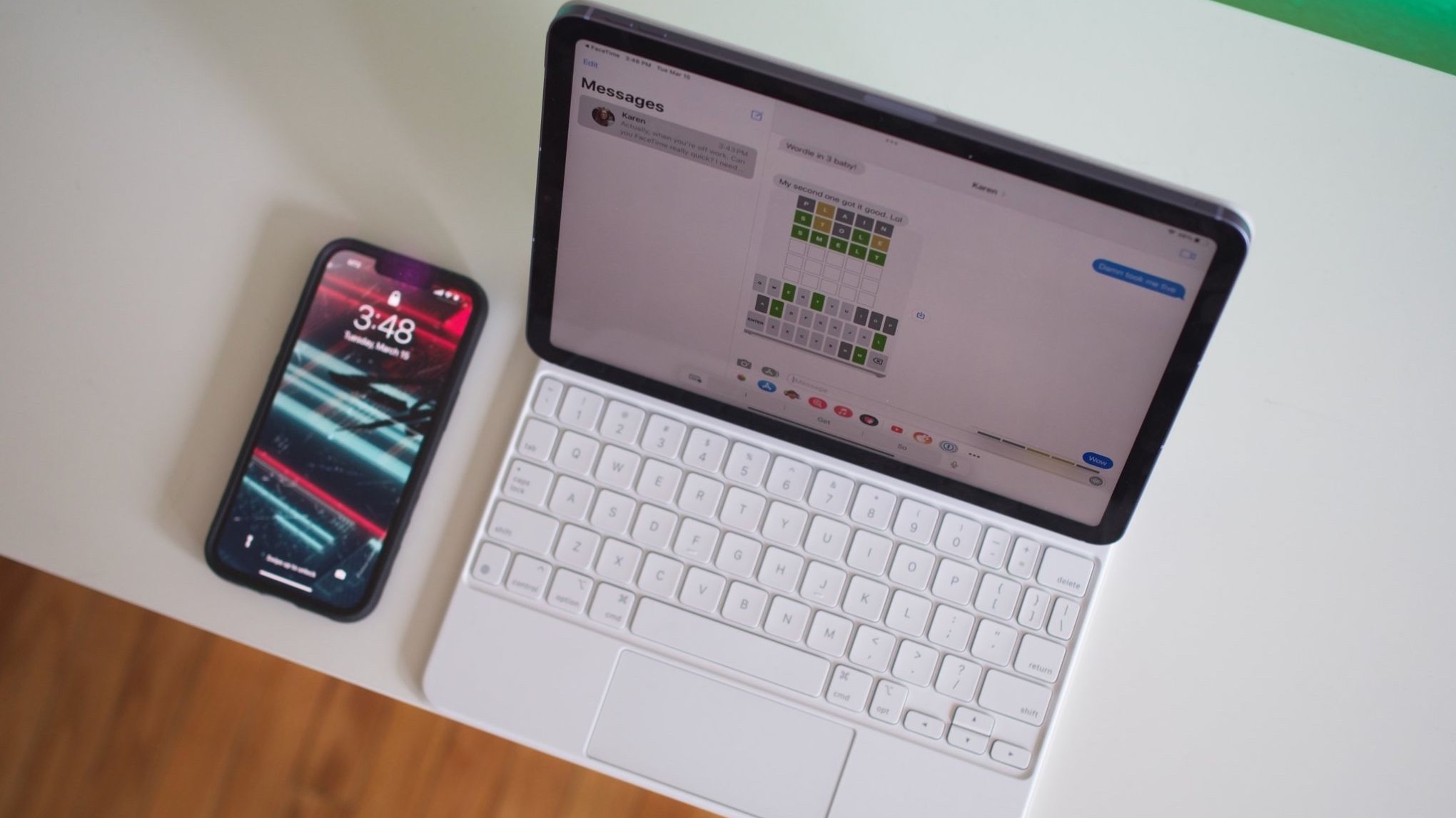
Productivity also takes a pretty giant leap forward with M1 because nothing I could throw at it would slow it down at all. As a photography enthusiast, I take many high-res RAW photos that I like to edit, and the iPad Air 5 is the first iPad I've owned that I felt could handle the RAW image editing I do with ease. In addition, color editing photos can be quite GPU intensive at times, especially if you are doing large batches of photos for an extended period, and the iPad Air 5 was able to handle it easily. Not only that, editing in Pixelmator went so smooth and fast, what would usually take me a few hours on my base iPad, I managed to get it done in about an hour. Increased productivity saves you time, which in turn can save you money, and that's something extraordinary about the M1.
Putting an M1 chip in an iPad is a bit like putting a Ferrari engine in a Prius
I will say, for as impressed I am with the M1 chip in the iPad Air 5, there's a conversation to be had about if the iPad Air needs an M1. Heck, you could argue that even the iPad Pro doesn't need an M1 chip. Putting an M1 chip in an iPad is a bit like putting a Ferrari engine in a Prius; you can do it, but what's a Prius going to do with all that power? iPadOS is still too limited in its ability to really take advantage of the M1 chip to its fullest potential. There are two ways of looking at it. One, you can be a tad cynical and just view the M1 chip in the iPad Air 5 as wasted potential and overkill. Or, two, you can think about what Apple may be able to do with iPadOS in the future because iPads can now use Mac chips. While macOS and iPadOS are very different, the lines keep getting blurred as iPads become more powerful. Suppose Apple keeps coming out with features like Universal Control. In that case, the possibility of what an iPad can be in the future is certainly up for debate.
One thing is for sure, putting the M1 chip in the iPad Air 5 with a starting price of $599 is an obvious indication that Apple continues to realize just how vital performance is for iPad users.
iPad Air 5: Battery
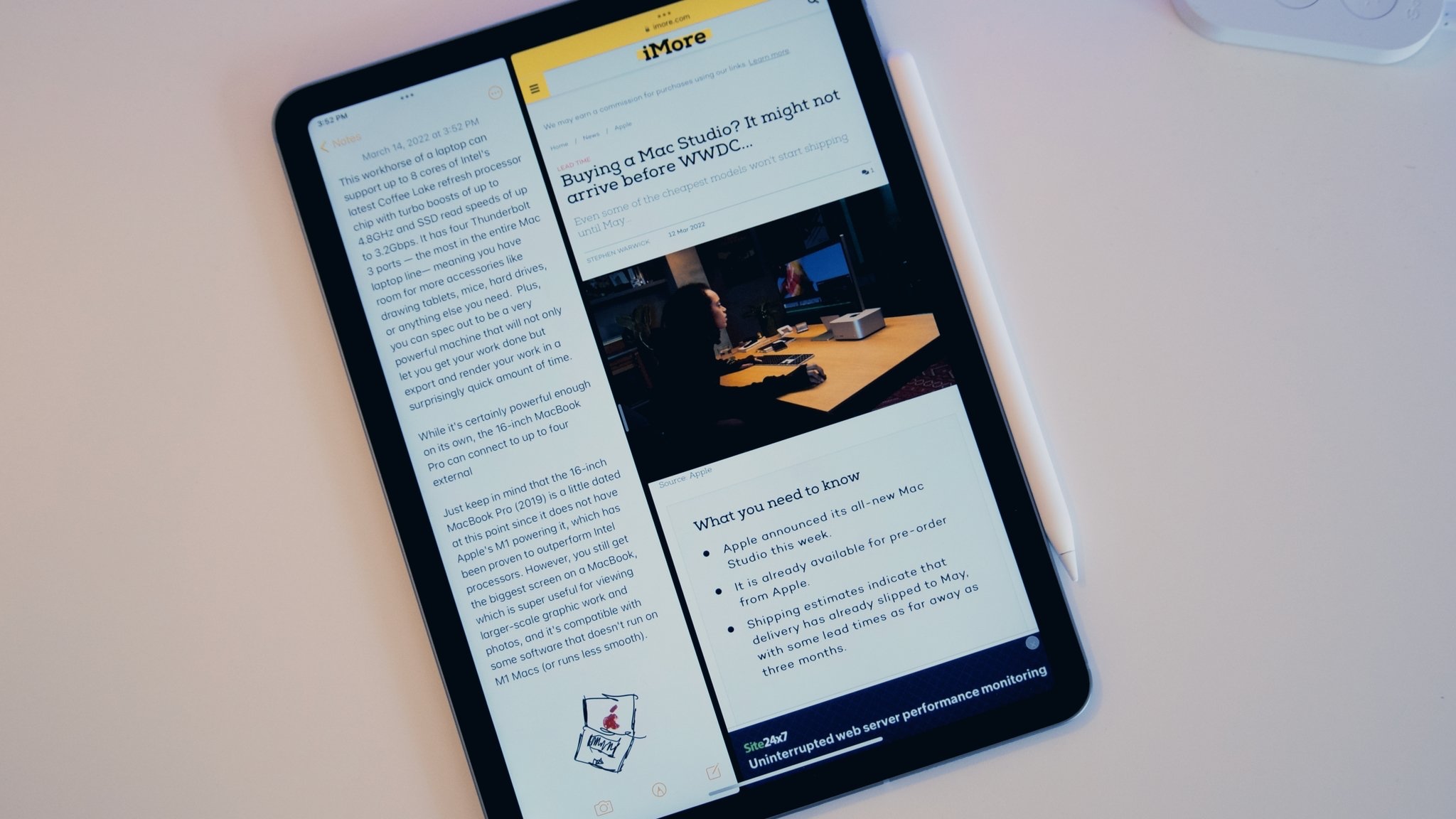
While Apple never officially releases their battery sizes for their devices, the iPad Air 5 has the same stated battery life as its predecessor, which isn't a bad thing considering the move to an M1 chip. Apple says you'll get about 10 hours of surfing the web on Wi‑Fi or watching the video, which is the same battery life stats it gave the previous iPad Air and gives the base iPad too.
I found that estimate to be relatively accurate. I was consistently getting anywhere from 10-12ish hours with pretty average use, and when I pushed the iPad Air 5 a little more with a ton of photo editing or a gaming a bunch, I did see a decrease in that battery life. Still, I don't think the battery life will surprise people in any way. If you know how long you usually get out of your iPad in your current workflow, you can expect the same on the iPad Air 5.
iPad Air 5: Cameras
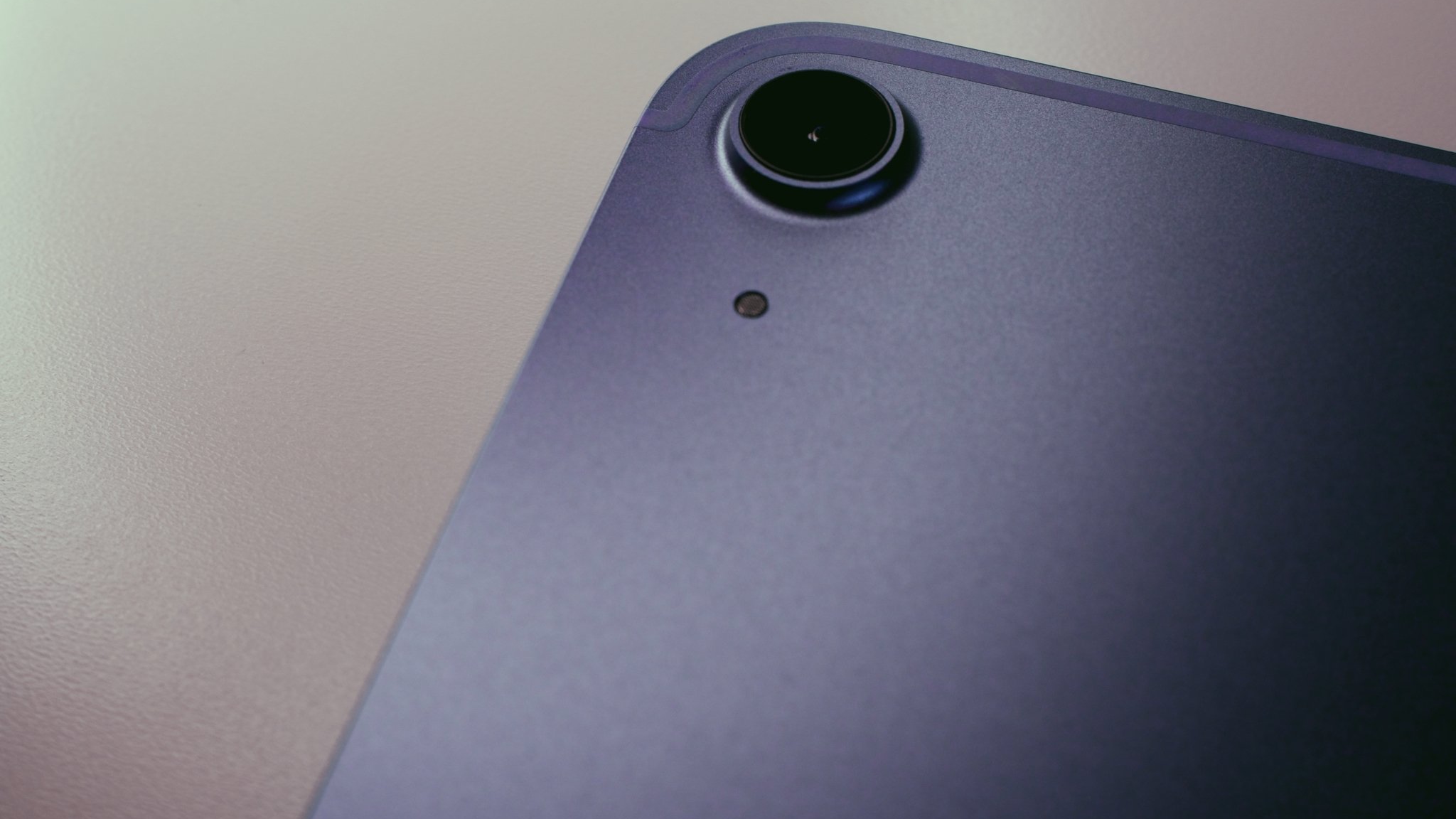
There still are only two cameras on the iPad Air 5, one on the back and one front-facing; however, the front-facing camera got a massive upgrade over the previous model.
Center Stage works great and is a welcome addition to the iPad Air
The front-facing camera is now a 12MP ultra-wide camera that features Center Stage. If you don't know, Center Stage is a feature that uses machine learning and the ultra-wide camera to focus continuously on one or multiple people that should be captured in the frame. When on a FaceTime call, your camera will intuitively stay focused on you, even if you happen to move around. So if you move to one side of the frame, it will "pan" over to you and do its best to keep you in the center of the frame. It will even zoom out to capture multiple people in the frame, so if you want your significant other to say hi to your mom, you can call them over to sit or stand beside you, and Center Stage should fit you both in the frame.
Center Stage works well in practice and is a welcome addition to the iPad Air 5. It makes video calls so much more enjoyable because you can adjust your position as you need without moving your iPad every time. The iPad Air 5 was the last iPad to get the Center Stage treatment, as the feature is now available across the entire iPad lineup. Video calling has never been more critical than in recent years, so It's nice that the iPad Air can finally be a suitable video conferencing device. |

As for taking pictures with the iPad Air 5, the rear 12MP camera is certainly serviceable, but it's the same camera that the previous generation had, so don't expect it to be anything extraordinary. It's a decent point-and-shoot camera if it's the one you have on hand, but if you want your iPad photography to be next-level, the iPad Pro will serve you much better. Still, if you need to snap a quick photo or two and the Air 5 is all you have on you, you'll likely be pretty happy with the results as long as there's enough light.
iPad Air 5: Apple Pencil and other accessories
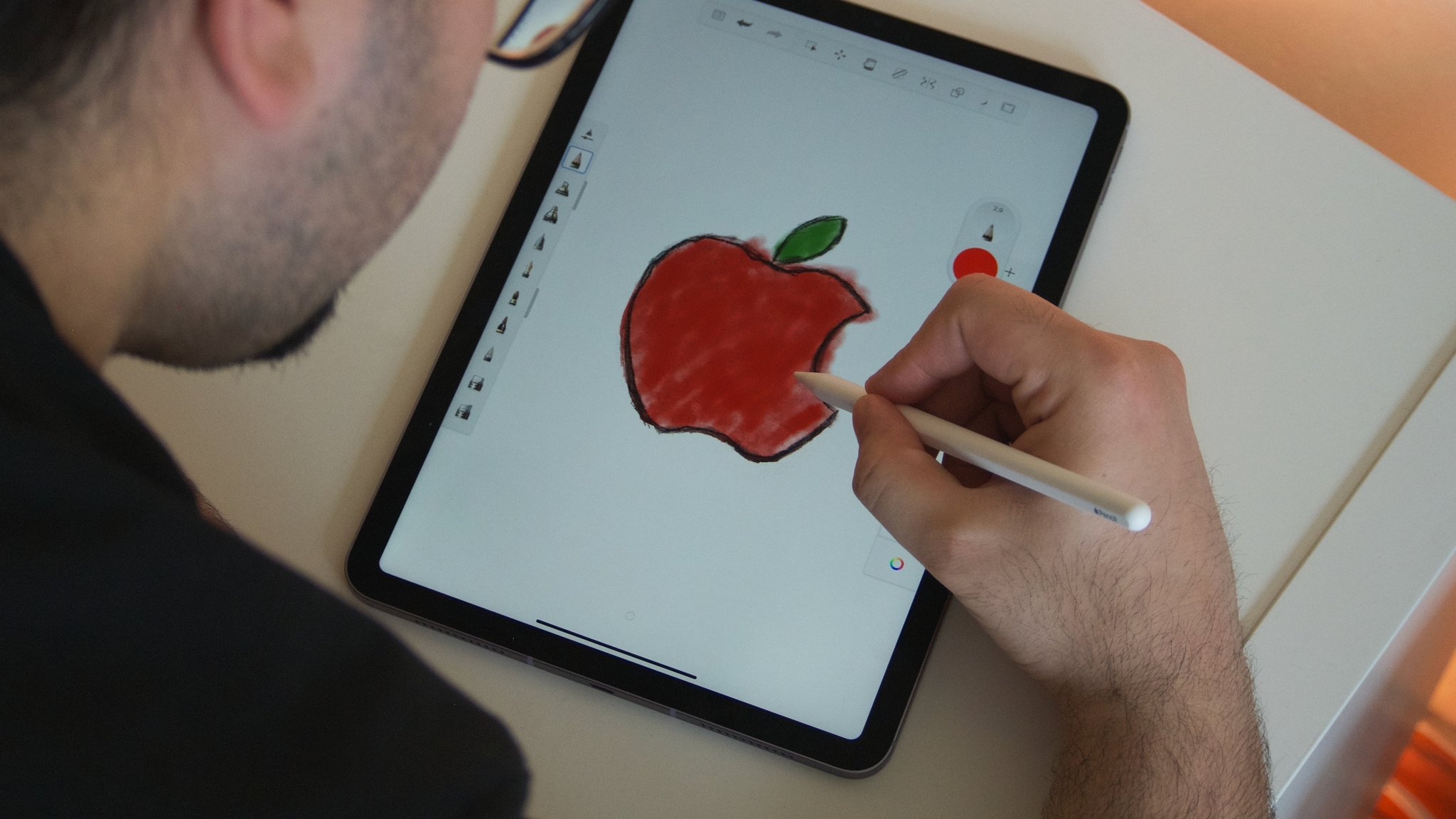
What's cool about the iPad Air 5 is, like its predecessor, it's compatible with pretty much all the same accessories that the 11-inch iPad Pro can use. Notably, the Magic Keyboard provides a fantastic way to type for any who likes to do a lot of work on their iPad. Plus, it even has a trackpad, turning your iPad Air 5 into a very laptop-like user experience.
The Smart Connector is located on the back of the iPad, so other accessories like the Smart Folio or Smart Keyboard also work with the iPad Air 5. Of course, all accessories are extra expenses, but the reason I mention this is that the 11-inch iPad Pro and iPad Air have never been closer in terms of specs. And with that $200 price difference at play, knowing the Air has access to all the same great accessories could factor into your purchasing decision.
Lastly, it's important to mention the Apple Pencil 2, the only Apple Pencil compatible with the iPad Air 5, does everything you expect it to do very well on the iPad Air.
While I'm not much of an artist myself, I occasionally sketch, and the Apple Pencil 2 paired with the iPad Air 5 seems like a perfect combination. It responds well to the pressure you apply, meaning you can get different thicknesses of lines or other effects depending on what tool you're using in your favorite drawing app. Plus, it still charges inductively by magnetically connecting the side of the iPad, making it easy to carry around with you when you want to take you're Apple Pencil with you on the go.
Once again, the upside to the Apple Pencil doesn't just stop with making art but instead gives you an entirely new way to interact with your iPad. Enabling slide-over or split-screen with an Apple Pencil in your hand feels incredible. It's easy to make contact with precise UI elements that have many uses across the OS and in a lot of apps you may use.
iPad Air 5: Competition
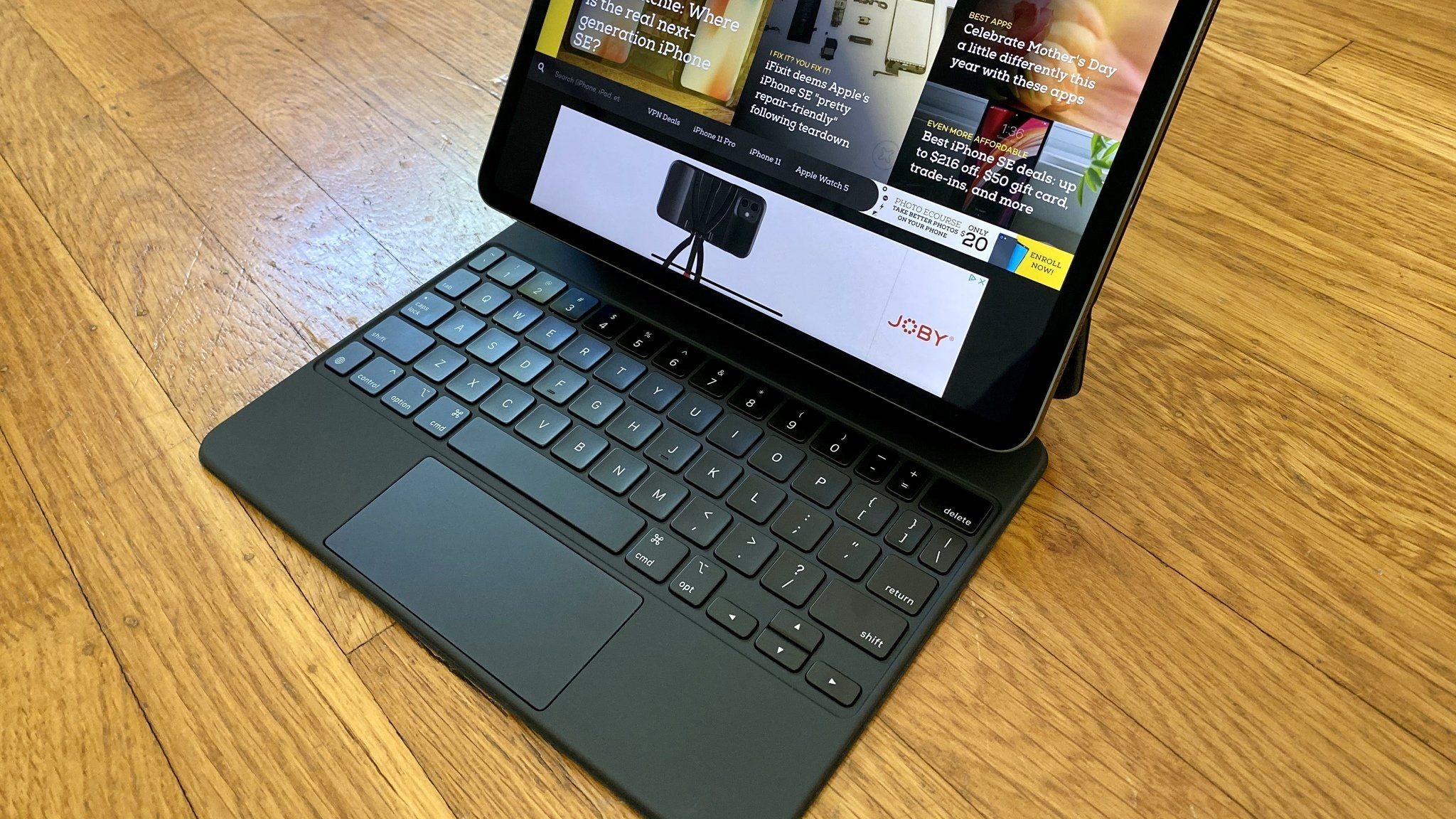
As always, Apple's biggest competition is itself. The iPad Air 5 and 11-inch iPad Pro have never been closer in power and performance thanks to the M1 chip powering both models, and with a $200 price difference, the decision to go with the Pro over the Air has never been more crucial. Do you need that ProMotion display? Does your workflow require the 40Gbps data transfer speeds that the Thunderbolt port on the iPad Pro provides? Or, are you satisfied getting the same powerful M1 chip that powers the Pro and speeding through all your tasks just as quickly, for significantly less money?
iPad Air 5: Should you buy it?
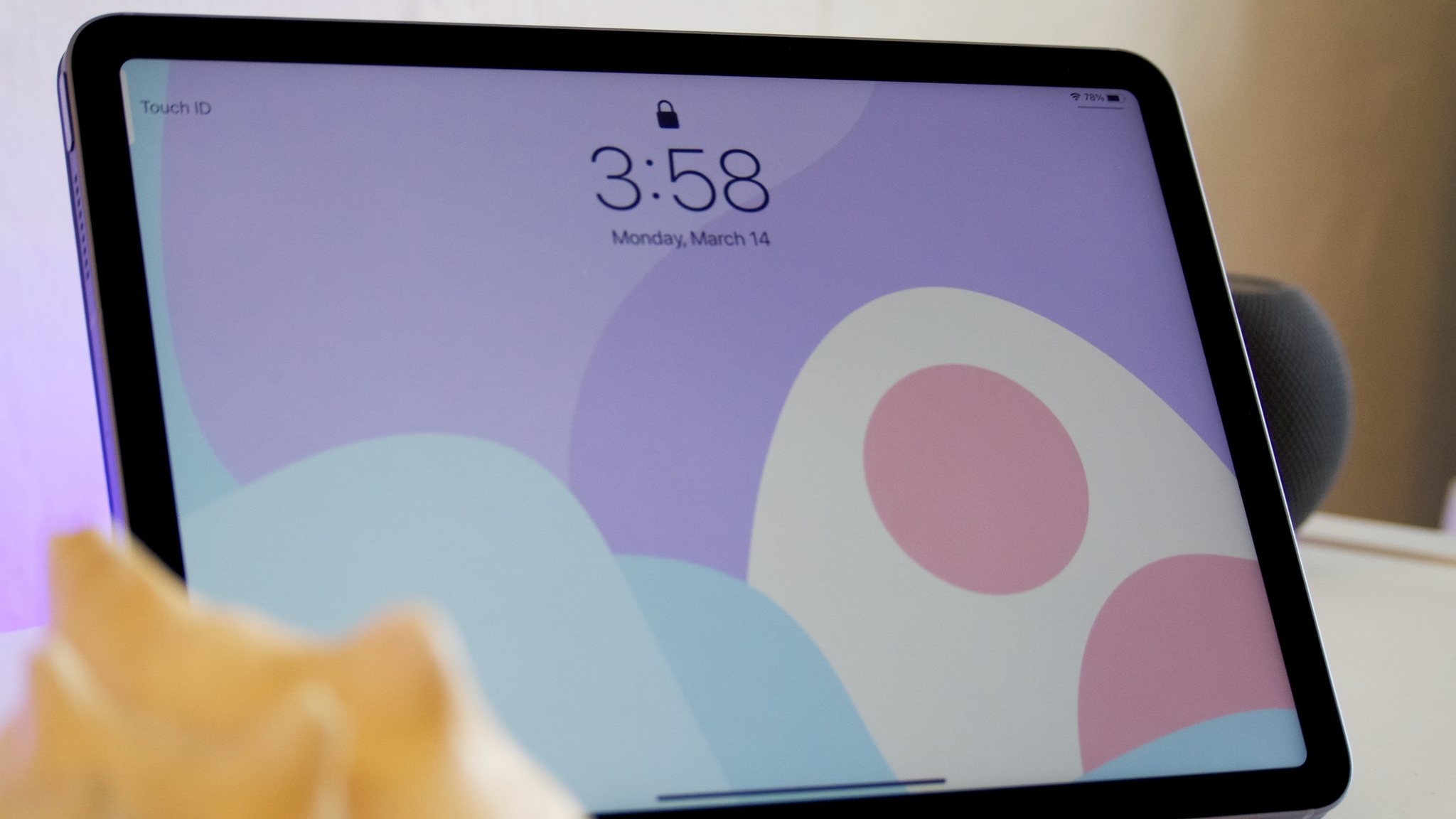
You should buy this if ...
You want the best performance for the best price
Let's face it, the iPad Air 5 has the almighty trifecta that every tech user wants; power, performance, and a reasonable price. It's hard not to recommend the iPad Air 5 as the best iPad for most people — especially if you want to hold onto it for several years. The M1 offers so much power that it will likely keep your workflow moving at a brisk pace for years to come, making it a great tablet to get for anyone looking to upgrade from an older model.
You like colors
The iPad Air 5 is still the only way to get a more colorful iPad, and honestly, the colors are great. It's a small thing, but I love the purple colorway on the Air, and it is so much more fun to look at than just some big black or silver boxes that the base iPad and iPad Pro models offer.
You should not buy this if ...
You need the iPad Pro specific features
While the M1 is impressive and makes the iPad Air 5 perform very similarly to the iPad Pro, there are still features only on the iPad Pro. Whether it's the Thunderbolt port that allows faster data transfer speeds, the ProMotion display that makes the screen much more fluid and improves the visuals, the better speaker array that gets louder than the Air, or just more storage options, there are just some things that iPad Air doesn't offer.
It's pretty simple when you boil it down; if you want the best iPad performance at the best price, the iPad Air 5 is the tablet you should buy. As long as it fits into your workflow and you don't need any of the pro features to get by, the iPad Air 5 will be able to handle anything you throw at it.
Personally, I would have difficulty justifying spending $200 more on the 11-inch iPad Pro as long as both models are packing the M1 chip. I know the iPad Pro offers some unique features that some people will need, but the iPad Air 5 is powerful enough for most people.
iPadOS has never been smoother; the 10.9-inch display is a perfect size for gaming, productivity, and even a secondary display via Sidecar with your Mac. It's still light enough to carry around easily, and it has access to all the fantastic accessories you could need to make it the ultimate iPad for almost any workflow.
Yes, it's not a massive upgrade over the previous generation. Still, with 5G compatibility, a much better front-facing camera, and an M1 processor powering it all, it's an excellent tablet experience that only Apple can provide.
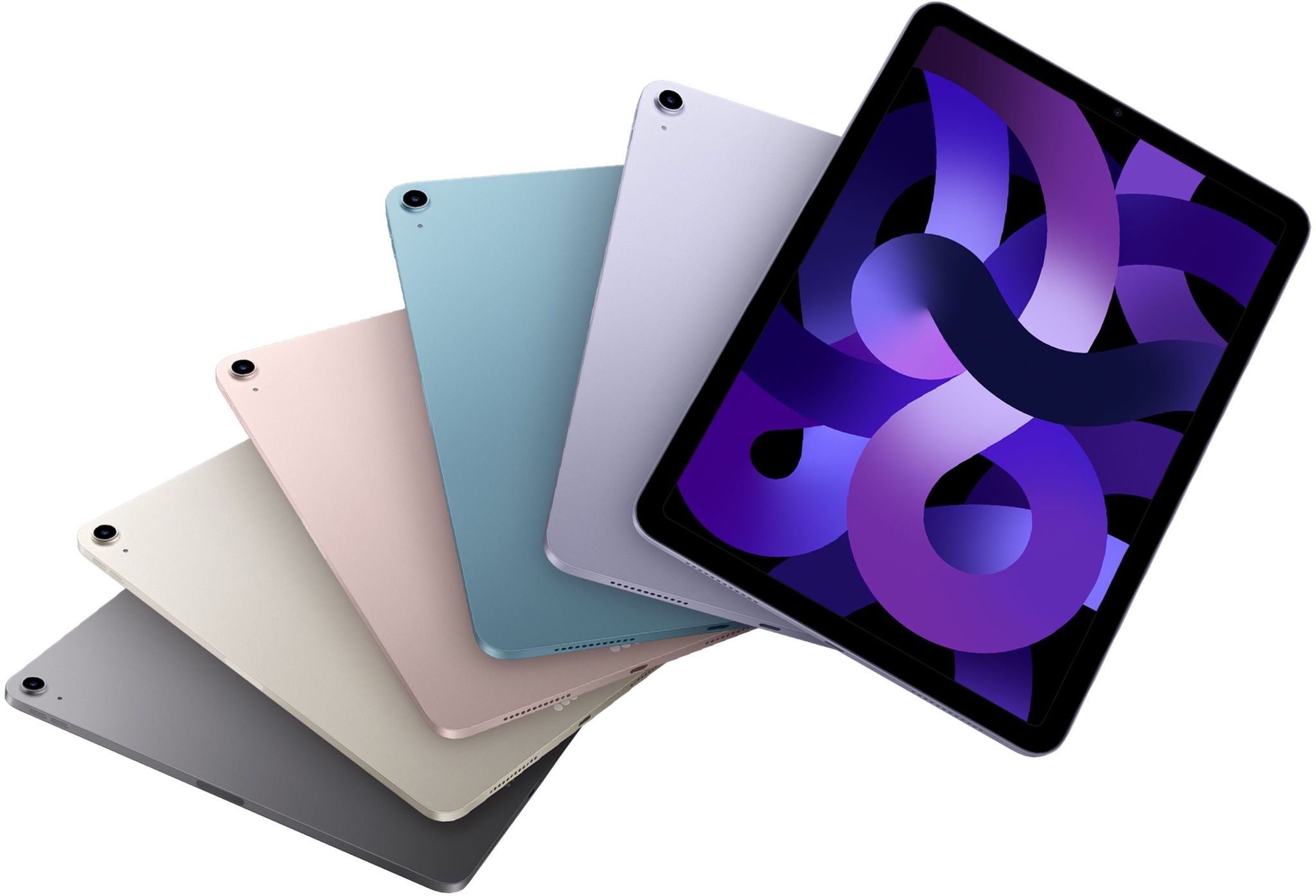
Pro-lite in the best way possible
This is the best iPad for most people, offering fantastic performance thanks to the M1 chip, but also a great starting price. Whether you use an iPad for work, play, or a combination of the two, the iPad Air 5 can handle anything you throw at it.

Luke Filipowicz has been a writer at iMore, covering Apple for nearly a decade now. He writes a lot about Apple Watch and iPad but covers the iPhone and Mac as well. He often describes himself as an "Apple user on a budget" and firmly believes that great technology can be affordable if you know where to look. Luke also heads up the iMore Show — a weekly podcast focusing on Apple news, rumors, and products but likes to have some fun along the way.
Luke knows he spends more time on Twitter than he probably should, so feel free to follow him or give him a shout on social media @LukeFilipowicz.
